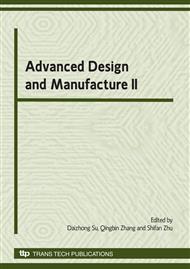p.337
p.341
p.345
p.349
p.353
p.357
p.361
p.365
p.369
Mixed Convection Cooling of a Stretching Sheet in the Presence of a Magnetic Field for Manufacturing Processes
Abstract:
The problem of flow and heat transfer over a continuously stretching surface finds applications in many manufacturing processes, such as polymer extrusion, wire drawing, continuous casting, glass fiber production, and metallurgical processes. It is known that the properties of the final product depend considerably on the rate of cooling during the manufacturing processes. The rate of cooling can be controlled by drawing the strips in an electrically conducting fluid subject to a magnetic field, so that a final product of desired characteristics can be achieved. In this study, the problem of magneto-hydrodynamic (MHD) mixed convective flow and heat transfer of an electrically conducting fluid past a stretching surface under the influence of an applied magnetic field is analyzed. After transforming the governing equations with suitable dimensionless variables, numerical solutions are generated by an implicit finite-difference technique for the non-similar, coupled flow. To reveal the tendency of the solutions, typical results for the velocity and temperature profiles, the skin-friction coefficient, and the local Nusselt number are presented for different parameters.
Info:
Periodical:
Pages:
353-356
Citation:
Online since:
October 2009
Authors:
Keywords:
Price:
Сopyright:
© 2010 Trans Tech Publications Ltd. All Rights Reserved
Share:
Citation:


